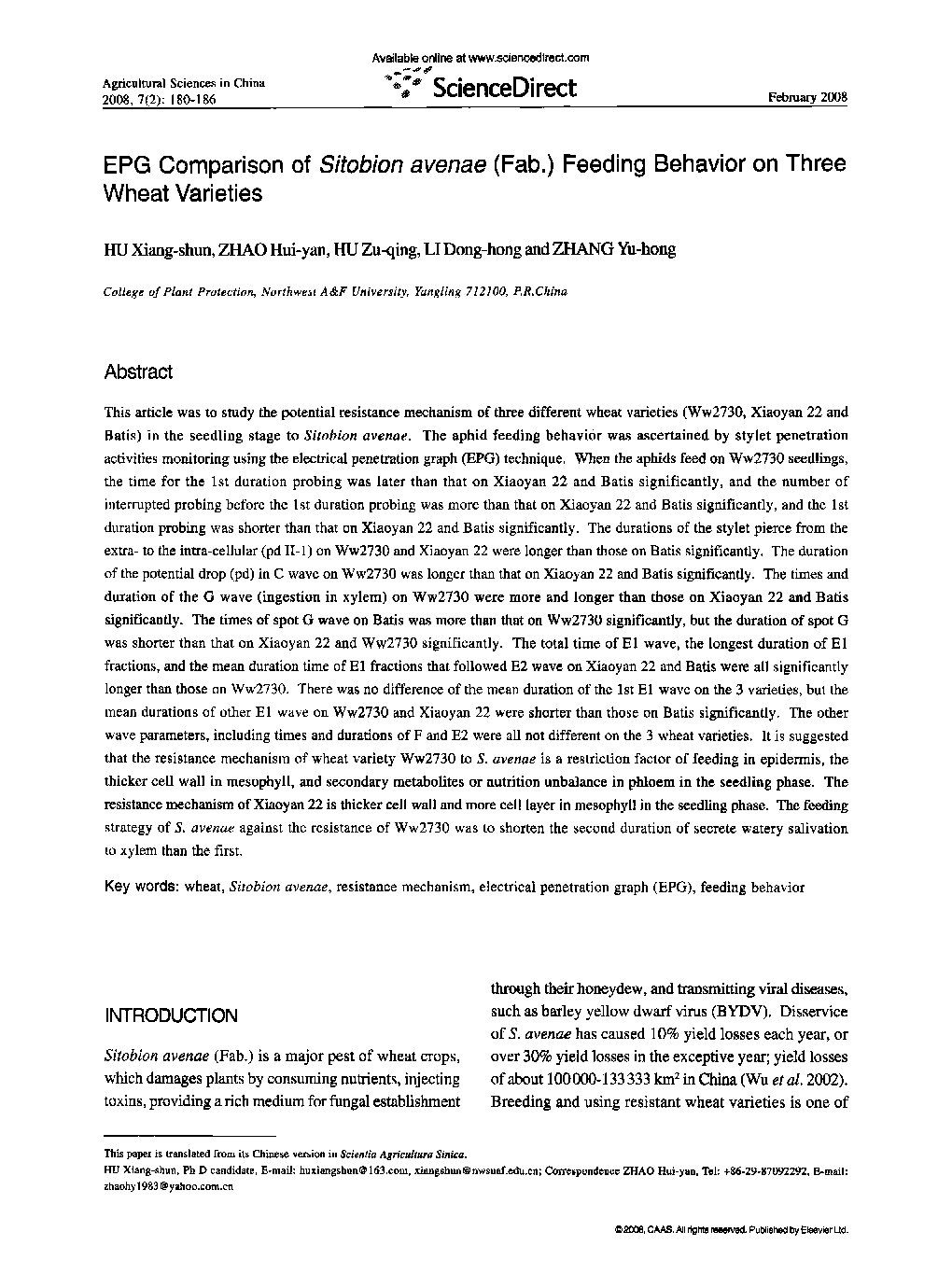| Article ID | Journal | Published Year | Pages | File Type |
|---|---|---|---|---|
| 4490705 | Agricultural Sciences in China | 2008 | 7 Pages |
This article was to study the potential resistance mechanism of three different wheat varieties (Ww2730, Xiaoyan 22 and Batis) in the seedling stage to Sitobion avenae. The aphid feeding behavior was ascertained by stylet penetration activities monitoring using the electrical penetration graph (EPG) technique. When the aphids feed on Ww2730 seedlings, the time for the 1st duration probing was later than that on Xiaoyan 22 and Batis significantly, and the number of interrupted probing before the 1st duration probing was more than that on Xiaoyan 22 and Batis significantly, and the 1st duration probing was shorter than that on Xiaoyan 22 and Batis significantly. The durations of the stylet pierce from the extra- to the intra-cellular (pd II-1) on Ww2730 and Xiaoyan 22 were longer than those on Batis significantly. The duration of the potential drop (pd) in C wave on Ww2730 was longer than that on Xiaoyan 22 and Batis significantly. The times and duration of the G wave (ingestion in xylem) on Ww2730 were more and longer than those on Xiaoyan 22 and Batis significantly. The times of spot G wave on Batis was more than that on Ww2730 significantly, but the duration of spot G was shorter than that on Xiaoyan 22 and Ww2730 significantly. The total time of E1 wave, the longest duration of E1 fractions, and the mean duration time of E1 fractions that followed E2 wave on Xiaoyan 22 and Batis were all significantly longer than those on Ww2730. There was no difference of the mean duration of the 1st E1 wave on the 3 varieties, but the mean durations of other E1 wave on Ww2730 and Xiaoyan 22 were shorter than those on Batis significantly. The other wave parameters, including times and durations of F and E2 were all not different on the 3 wheat varieties. It is suggested that the resistance mechanism of wheat variety Ww2730 to S. avenae is a restriction factor of feeding in epidermis, the thicker cell wall in mesophyll, and secondary metabolites or nutrition unbalance in phloem in the seedling phase. The resistance mechanism of Xiaoyan 22 is thicker cell wall and more cell layer in mesophyll in the seedling phase. The feeding strategy of S. avenae against the resistance of Ww2730 was to shorten the second duration of secrete watery salivation to xylem than the first.
